11 Nights / 12 Days

Jambay Lhakhang Drup is one of the most popular festivals in the country and takes place in one of the oldest temples, which dates its establishment back to the 8th Century AD. It is believed that Tibetan King Songtsen Gyempo constructed 108 monasteries throughout Eastern Tibet and Bhutan to subdue a demon, 2 of the temples happened to be in Bhutan (Jambay lhakhang in Bumthand and Kyichu Lhakhang in Paro), each temple pinning a part of the demon's leg to the ground. The festival is organised by the community and features folk dances and different mask dances. The most popular and important part of the festival is the MeWang (fire blessing) and the Tercham (Naked Dance). Both these rituals takes place in the night; a tall temporary gate is constructed and is covered by inflamable pine leaves which is then lit after a short mask dance at the courtyard of the temple. Once it's lit, the mask dancers walk underneath it and then the public follows in quite a rush due to the heat. The Naked Dance takes place around midnight and is performed not by monks but by the local men and boys of the community. They enter the temple where they are blessed, then they take off all their clothes and cover their faces and enter the courtyard led by the chief dancer. A short mask dance like steps are performed by the men before each one makes a round of the spectators blessing them with their naked bodies.
It is believed that the fire blessing and the naked dance will cleanse us of our bad karma.
After pick-up at the airport, you will be taken to a restaurant for some refreshments and to freshen up. Drive to Thimphu and check-in at the hotel, have lunch at the hotel.
After lunch, visit the Textile Museum and the Takin Conservation Centre. Later in the evening, visit Tashichhoe Dzong and the go back to the hotel. You could either take rest or take a walk around town.
Overnight at a hotel in Thimphu
After breakfast, take packed lunch from the hotel and drive northwards to Tango and Chari monasteries.
Tango Monastery: Located north of Thimphu valley, it is about a half hour drive and about an hour long climb away. It is a 12th century monastery but the structure dates back to the 15th century. A beautiful dzong like temple that sits in the middle of tall pine trees on top of a ridge that supposedly looks like the head of a horse (Tango = Horse head). This monastery is also a Buddhist college and the residence of one of the most revered reincarnated Lamas in the country.
Chari Goenpa: The mountain itself is considered as it represents the Bronze mountain in the nether world. The monastery was built in 1620's it is very close to Tango and takes about an hour and a half steep climb up to reach there. The ashes of Zhabdrung's father are preserved in the temple inside a stupa. Many monks go to either Tango or Cheri to meditate.
These area falls under the Jigme Dorji Wangchuck National Park and is a protected area. If there are not many people on the trail, one can generally see deer and other small animals and different varieties of birds.
After this, you can drive back to town and go to Kuensel Phodrang to see the magnificent statue of Buddha (the tallest statue of “sitting Buddha” in the world) and a bird’s eye view of Thimphu. While going back, visit the Memorial Chorten (built in 1974 in honor of the 3rd king).
Overnight at a hotel in Thimphu
Drive to Punakha after an early breakfast. Punakha was the old capital of Bhutan and still functions as a very important Dzong in the country. All the Kings were coroneted in this Dzong, the most recent occassion was the current King’s ascending of the throne and his marriage, the Dzong is believed to be a replica of Guru Rinpochhe’s palace in his paradise. En-route visit the 108 Druk Wangyel Chortens at Dochula Pass (3100m), then further to Punakha to check-in at your hotel and have lunch. Post lunch, drive up the valley and go visit Khamsum Yueley Namgyal Chorten: Completed in the 1999, it is dedicated to the 5th King of Bhutan, it is a unique and beautiful stupa that sits on a small hill on the other side of the motor road. From the road end you have to take a short hike of about 45 minutes through paddy fields and light pine forest to reach the stupa above. Once there one can enjoy the view of Punakha valley from the top of the stupa.
Overnight at a hotel in Punakha
Post early breakfast, you will be driven towards Trongsa and on the way you will visit Chimi Lhakhang The Chimi Lhakang or the Chimel Lhakang is a Bhuddhist monastery located in the Punakha District of Bhutan. The monastery stands on a small hill close to the village of Lobesa and was constructed in 1499 by Ngawang Choegyel, the 14thDrukpaheirarch. The Temple is very deeply connected to the legends of Saint Drukpa Kinley also known as the Devine Madman. It has been said that the demon of Dochu-La with a magic thunderbolt of wisdom in imprisoned him in a rock close to the temple. Drukpa Kuenley is called the Divine Madman due to his unorthodox methods of teaching via songs, humor and sometimes bizarre and shocking behavior with deep sexual overtones. You might be shocked to see that the temple houses a number of wooden phalluses that the Lama had brought with him from Tibet. Pilgrims who visit the monastery receive the blessing by being struck on the head with a ten inch wooden Phallus (erect penis). The symbol of an erect penis is said to ward off evil. The monastery is also known as the temple of fertility and is visited not only by the Bhutanese but women from countries as far as Japan and United States to receive a special blessing that can help these women conceive children. These women receive the blessing by getting struck on the head with a 10 inch wooden/ ivory phallus. The Temple can be accessed by undertaking a short 20 minute walk across the rice fields from the nearest road head. The Lhakhang is a square shaped building with a golden spire on its roof. The temple has many rows of prayer wheels and the temples exterior has embedded slate carvings of various Buddhist saints. Near the temples entrance there is a small Chorten that marks the spot where the Lama subdued the demon of Dochu La.
On the way we will visit Chendebji chorten Located 2 kilometers away from the village of Chendebji is the Chendebji Chorten, a large Buddhist Stupa. The Chendebji Chorten is a large white structure built in likeness to the famous Bodhunath Stupa located in Kathmandu in Nepal. The Chorten was constructed by Lama Shinda from Tibet in the 19th century AD. The Stupa is believed to have been constructed at a spot where an evil spirit was subdued by the Lama. Another striking feature of the Temple is the eyes painted at the four cardinal points of the temple.
Later when you reach Trongsa, we will visit Trongsa Dzong The Trongsa Dzong or the Cheokhor Rabtentse is one of the largest and most impressive Dzongs in all of Bhutan. The Dzong is located on a cliff overlooking the Mangde Chu river gorge.
The Dzong was built at the site of a temple that was constructed in 1543, by a Drukpa Lama. This huge multi-level fortress comprises of a series of courtyards and passageways that are built along the topography of the ridge. There are 25 temples located within the confines of the Dzong, most of these temples are dedicated to the deities important in Tantric Buddhism. A five day long Trongsa Tsechu is organized in the northern courtyard of the Dzong each year during the month of December or January. The festival celebrates the triumph of Buddhism over the evil forces. The most striking feature of the festival are the masked dancers and the unveiling of a huge Thangkha painting of the Guru Rinpoche and other sacred deities. In 2008 a small museum dedicated to the history of the Dzong was opened following a generous donation from Austria. The Trongsa Dzong served as the seat of the first and the second king of Bhutan, and its tradition for the crown prince of Bhutan to be appointed as the Penlop (Governor) of Trongsa before assuming the throne. This post is akin to the Prince of Wales where the heir to the British Thrones serves as the Prince of Wales.
Overnight at a hotel in Bumthang
Post very early breakfast, we will drive you up to Bumthang which is just 2 hrs drive from Trongsa and after reaching Bumthang, we will take you to Jambay Lhakhang and for the whole day we will witness the Jambay Lhakhang Drub Festival (Scheduled from 06 Nov – 1 Nov, 2014). Jambay Lhakhang, built in the 7th century by the King Songtsen Goempo of Tibet. In his effort to propagate Buddhism he had a plan to build a total of 108 temples in Tibet and neighboring kingdoms.
First day of Jambay Lhakhang The first day of the festival begins in the evening around 8:30 pm. The details of the first day of the festival are as follows:
Black Hat Dance (Zhana) and of the Gings (emanations of Guru Rinpoche): Dancers wear long brocade robes and ornate black hats, perform this dance. The dancers who represent the Ging wear shorter robes with masks. This dance is performed to purify the ground and to chase away evil influences.
Dance of Offering (Tshogcham): A dancer offers the body of evil spirits to the deities. After the offering is made the audience goes outside the temple where an arch of pine bushes has been erected.
Fire Dance (Mecham): The arch of pine is set on fire. The fire is said to purify the earth of evil spirits. People who pass through the arch have their sins cleansed. A dancer chases away the evil spirits.
Today will go and witness the full second day of the Jambay Lhakhang Drup (festival) which will start around 10:30 am. You will be watching many ritual dances, which are performed in the court yard of Jambay Lhakhang. There are a number of different dances, subdivided into three categories: those that are intended to give moral instruction; those that are designed to drive away evil spirits and those that celebrate the Buddhist faith in its many guises. This is the occasion where the local people, dressed in their finest clothes, come to attend the festival with packed lunches. This occasion also gives opportunity to the local businesses- there will be a number of stalls selling craftwork, jewellery, religious artifacts and thangkas.
Details of the 2nd Day Jambay Lhakhang Drub (festival) are as follows: It follows a ceremony where a small girl representing the daughter of Sindhu Raja blesses the villagers.
Dance of Singje Yab Yum (Lord of death and his consort): The Lord of Death and his consort perform this dance to protect the four realms over which he has power.
Dance of Nyulema and Peling Ging Sum (Three kinds of Ging): The Nyulema is an evil spirit represented by a boy in a skeleton mask. The Ging with the sticks catch the Nyulema.
The Durdag or the Lords of the Cremation Ground (represented with dancers wearing white skeletal masks) bring forward a box, which represents evil spirits. The Ging with swords liberate the mind of the evil spirit by killing its body of flesh. The Ging with drums dance to celebrate the victory of religion over the evil spirit.
Dance of the Jachung Bochung (Two mythical birds): Dancers wearing masks representing the auspicious birds perform the dance.
The play of the Atsara Gapo Pawo Solgyo (Atsara who acts like a Pawo). Though most of the stories and plays were originally with Buddhist sub text they now serve as comedy relief for the crowd. This story is about an Atsara (clown with a red mask) who is mad. The Atsara injures his son, as he did not recognize him. He tries to save his son‘s life by impersonating a pawo or medium and tries to perform a religious curative ceremony. Being unsuccessful he has to finally call a doctor and a monk to cure his son.
Third day of Jambay Lhakhang Drub. The program begins at around 10:30am. Below are the details of the day‘s program.
Dance of the four stags (Shacham): The King of the Wind was causing much unhappiness and suffering in the world. Ugyen Rinpoche subdued him and then as a sign of victory rode on the stag, which was the mount of the king of the Wind. Later a disciple of Guru Rinpoche, Namkhay Nyinpo found an effigy of the face of the stag which appeared to be a blessing. Thus the dance came into existence.
Dance of Ging Tsoling: The dance is supposed to take place in the paradise of Guru Rinpoche and is performed by incarnations of the Guru. The dance is said to give blessings to those who witness it as well as remove obstacles to the doctrine of the Buddha. People whistle during the dance to chase away evil spirits and the Ging hit people on the head to chase away impurity from the body.
Dramitse Ngacham (Dance of the drums from Dramitse): The creator of this dance was Kuenga Gyeltshen, a learned lama from the 16th Century who lived in Dramitse. He is reputed to have seen the dance in Guru Rinpoche‘s paradise performed by attendants of the guru. The dance proclaims the superiority of religion over evil spirits.
Pacham - Dance of the heros: Pema Lingpa (the Treasure-Revealer who discovered many Buddhist treasures) saw thisdance in Guru Rinpoche‘s paradise. On his return to earth he recreated this dance. The most important attendants of the Guru perform the dance. They lead the beings who die into the presence of the Guru.
Phole Mole: The nobleman and the lady. This play is about two princes who leave their princesses and go to war. An old couple is to take care of the princesses. As soon as the princes leave the clowns try to frolic with the princesses and also corrupt the old women. When the princes return they are shocked by the behaviour of the princesses and the old women, and have their noses cut off as a punishment. Finally a doctor is called and everyone‘s nose is restored and the princesses and princes marry.
Post breakfast you will visit Chamkhar Or Chakar Lhakhang (The iron castle) It was originally a nine-storey 'iron castel' palace of 8th century King Sidhu Raja, which was replaced by more modest building in 4th Century. The presentr bulding was constructed in early 20th century. It also houses the ritual dance masks used at Jambay lhakhang festival.
Then go to the festival for a while and then hike to Kurjey Lhakhang It is a monastery located in the Bumthang Valley of Bhutan. The Kurjey Lakahng Temple Complex is a 30 minute hike from the Jambay Lhakhang temple. According to legend Sendhu Raja, the King of Bumthang was very ill and invited Guru Rinpoche the founder of Buddhism in Bhutan to give him a cure for his ailment. Upon his investigation the Guru Rinpoche discovered that the illness was caused by the malevolent local deities including the Sheling Karpo. Upon finding out that these deities were responsible; the angry Guru chased them in to a cave. Guru Rinpoche then sat there and meditated for three months, upon waking up he subdued the deities and cured the thankful King of his ills. The guru left an imprint of his body in the cave to serve as a reminder to all evil beings of his wrath.
Tamshing Lhakhang is home to Lama Sungtrul Rinpoche, the present day speech reincarnation of Pema Lingpa.The temple was constructed in 1501 by the great Pema Lingpa himself. Before 1960 Tamshing was privately owned. After the death of Pema Lingpa in 1521 the monastery was cared for by his decedents and gradually fell into a state of disrepair. The fledgling monastery underwent a revival when a group of monks from the Lahlung monk body but Tibet sought to re-establish their order here. The initial group then grew from 10 to its present day number of 95. The core mission of the Tamshing monastery is to teach the Dharma, perform religious service for the community and educate the young monks under its care. Since the monastery is not state runs the monks find it a challenge to support the operation of this monastery and survive off donations from the devout. Most of the young monks in the monastery are under the age of 15 and are either orphans or come from very poor families who can‘t afford to send their children to even the state run schools.
Have lunch in town and then drive towards Tang to see Mebartsho The Burning Lake or the Membar tsho; It is not a lake as such but a small stream instead which gets collected into a small pool. This is the place where Pema Lingpa discovered his first treasure. The villagers didn’t believe that he found the treasures there. So, to prove that he was not lying he jumped in the lake with a burning butter lamp in his hand, when he came out he had some more treasures in his hand and the lamp was still burning.
Bumthang Cheese Factory Red Panda Beer Factory: It is where you can enjoy a tour and tasting at this unique cheese factory and beer factory founded in 2006 by Fritz Maurer, a Swiss man who became a Bhutanese citizen in 1976. The brewery was the first of its kind in Bhutan, producing both a local beer called Weissbier and apple juice, for those who prefer non-alcoholic beverages.
Late in the evening we will take you to Jambay Lhakhang to witness the highlights of Jambay Lhakhang Drup festival. There will be a Fire Blessing ceremony to cleanse one of sins and later followed by the famous Naked Dance around midnight.
Overnight stay in a hotel in Bumthang
Have early breakfast and drive to Phobjikha, the valley of the Black Necked Cranes. This is the winter nesting grounds for the endangered Black Necked Cranes, they start arriving by October end and leave for the Tibetan plateau by February. The valley is believed to have been created by glaciers and is shaped like a bowl, hence the name ‘Phob’ meaning bowl. Once there stop at Gangtey monastery, a privately funded Buddhist college of Nyingmapa sect. It’s worth going in for a short visit to see the beautiful carvings inside.
After that, take a trail that goes down the hill, it’s called the Gangtey Nature Trail and is a beautiful hike around the valley through lightly covered pine and juniper forests. This is also the closest you will come to the cranes (during winters) as it’s prohibited to go away from the trail and down to the marshes in the valley. Your car will pick you up at the end of the marshes in the valley to take you to your hotel.
Overnight stay in a hotel/ guest house in Gangtey
Drive to Thimphu after an early breakfast, stop at Dochula where you can take a short break whilst enjoying the view and then drive straight to Paro, where you will drive straight to your hotel to check-in
Overnight at a hotel in Paro
The most famous and sacred site among all the places in Bhutan. Guru Padmasambhava is said to have come riding on a flying tigress to this place and meditated in a cave for 3 months, it wasn’t until Zhabdrung Ngawang Namgyal came to this place and meditated that it gained the popularity that it has now. The present structure is said to be built in the 15th century but was destroyed by fire in 1998 and has been restored.
The walk is about 2 hours till the top through wide pathways which was built during the restoration works. One hour into the climb there is a tea point from where you get a very good view of the monastery, they also serve lunch here. From there it’s about another 45 minutes climb to the 2nd view point and the highest point in the hike.
Drive up to Drugyal Dzong ruins after that, it sits on top of a small hill overlooking a small picturesque village. On a clear day, Mt. Jomolhari can be seen from here making a nice backdrop for a picture
Overnight at a hotel in Paro
After an early breakfast, drive up to Chelela Pass, which, at 3800m, is the highest motorable paved road in the country. The drive up to the pass is about an hour and another hour down to Paro valley. On a clear day the pass offers stunning views of Mt. Jomolhari and Mt. Jichu Drakey and if you are lucky you can even see Mt. Kanchenjunga at a distance.
Once you reach Haa, if you feel energetic you can go and visit Lhakhang Karpo (White temple) and Lhakhang Nagpo (Black temple) a little further up, about 10 minutes hike. Haa valley is small and beautiful and is said to be a Hidden Land, a valley protected and blessed by Guru Rinpochhe. This valley wasn’t open to tourists until a decade ago. The Indian Army’s base HQ in Bhutan is in this valley, and they have occupied the Dzong as their administrations centre. You can visit the Dzong where the Indian Army has even setup a CSD and non-CSD canteen, the central tower is still managed by the Central Monastic body.
Drive back to Paro after lunch. You can relax in the evening by talking a walk in town and mingling with the locals.
Overnight at a hotel in Paro
Departure
We are a trusted travel company of travel specialists who create customized Bhutan journeys to the likings and sensibilities of our customers. We create trips around your interests and schedule—to make it one-of-a-kind experiences that are as unique as you are. We can have you traveling to the far reaches of Bhutan Himalayas, take you through the traditional and rustic villages of Eastern Bhutan or walk you through the Bhutan Festivals. Our expertise, know-how, and customer handling skills enable us design journeys that are adventurous, exciting, exploring and insightful. We have been in operation since 2009 and were earlier known as Bhutan Trip Advisors. Since then we have served more than 5,000 satisfied customers worldwide. Read More...
 8D/7N
8D/7N
 12D/11N
12D/11N
 11D/10N
11D/10N
 12D/11N
12D/11N
 13D/12N
13D/12N
 10D/9N
10D/9N
 6D/5N
6D/5N
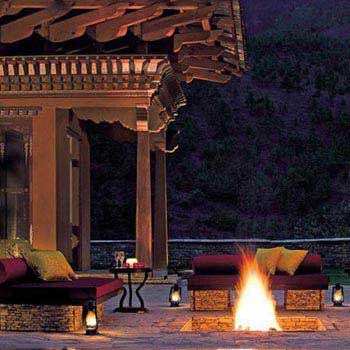 12D/11N
12D/11N
 9D/8N
9D/8N
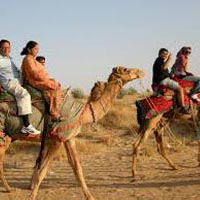 12D/11N
12D/11N
Camel Safari in Rajasthan Tour
New Delhi - Jodhpur - Jaisalmer - Ranakpur - Udaipur
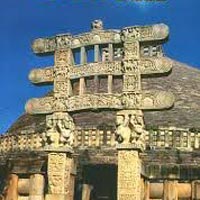 12D/11N
12D/11N
Back to Madhya Pradesh Tour (Central Ind..
Gwalior - Jhansi - Jabalpur - Bhopal - Tikamgarh - Chhatarpur - Kanha - Pachmarhi
 12D/11N
12D/11N
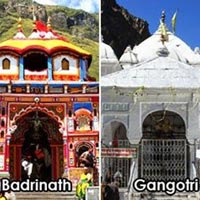 12D/11N
12D/11N
Chardham Yatra (Ex Delhi) 11 Nights / 12..
Haridwar - Garhwal - Uttarkashi - Rudraprayag - Chamoli - Rishikesh
 12D/11N
12D/11N
Guwahati - Kaziranga - Shillong - Tawang - Cherrapunji - Bomdila - Bhalukpong
 12D/11N
12D/11N
11nights/12days Himachal Punjab Romantic..
Chandigarh City - Shimla - Manali - Dharamshala - Dalhousie - Amritsar - Ludhiana -..
 12D/11N
12D/11N
Haridwar - Rishikesh - Uttarkashi - Rudraprayag - Chamoli - Joshimath - Srinagar - ..
 12D/11N
12D/11N
 12D/11N
12D/11N
Haridwar - Rudraprayag - Rishikesh - Uttarkashi - Chamoli - Gangotri
 5D/4N
5D/4N
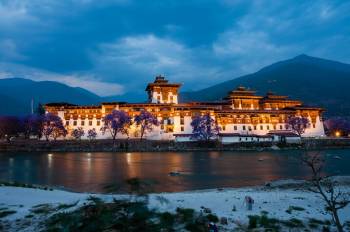 7D/6N
7D/6N
6 Nights/ 7 Days - Bhutan Happiness Tour
Punakha - Bumthang - Paro - Thimphu - Phobjik
 7D/6N
7D/6N
6 Night 7 Day Wonderful Bhutan Tour
Thimphu - Paro - Wangdue Phodrang - Punakha
 7D/6N
7D/6N
 20D/19N
20D/19N
20 Days Land Package Country Tour Bhutan..
Punakha - Paro - Phuntsholing - Bagdogra - Bumthang - Mongar - Trashigang - Trongsa..
 4D/3N
4D/3N
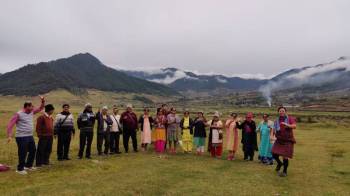 6D/5N
6D/5N
 7D/6N
7D/6N
 7D/6N
7D/6N
Rimso 7 Days 6 Nights Bountiful Tour fo..
Thimphu - Punakha - Paro - Phuentsholing